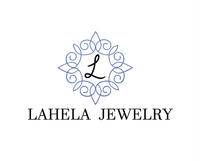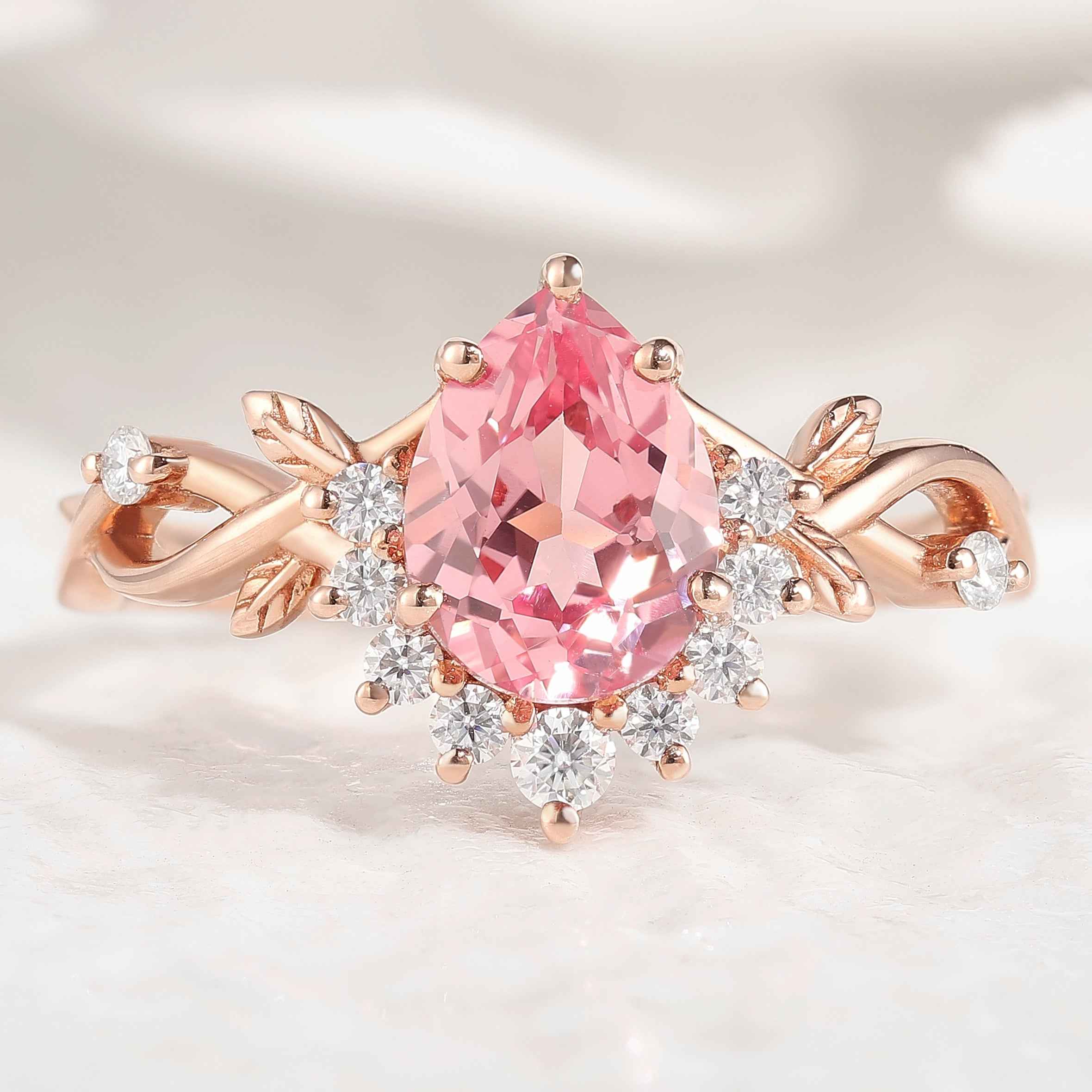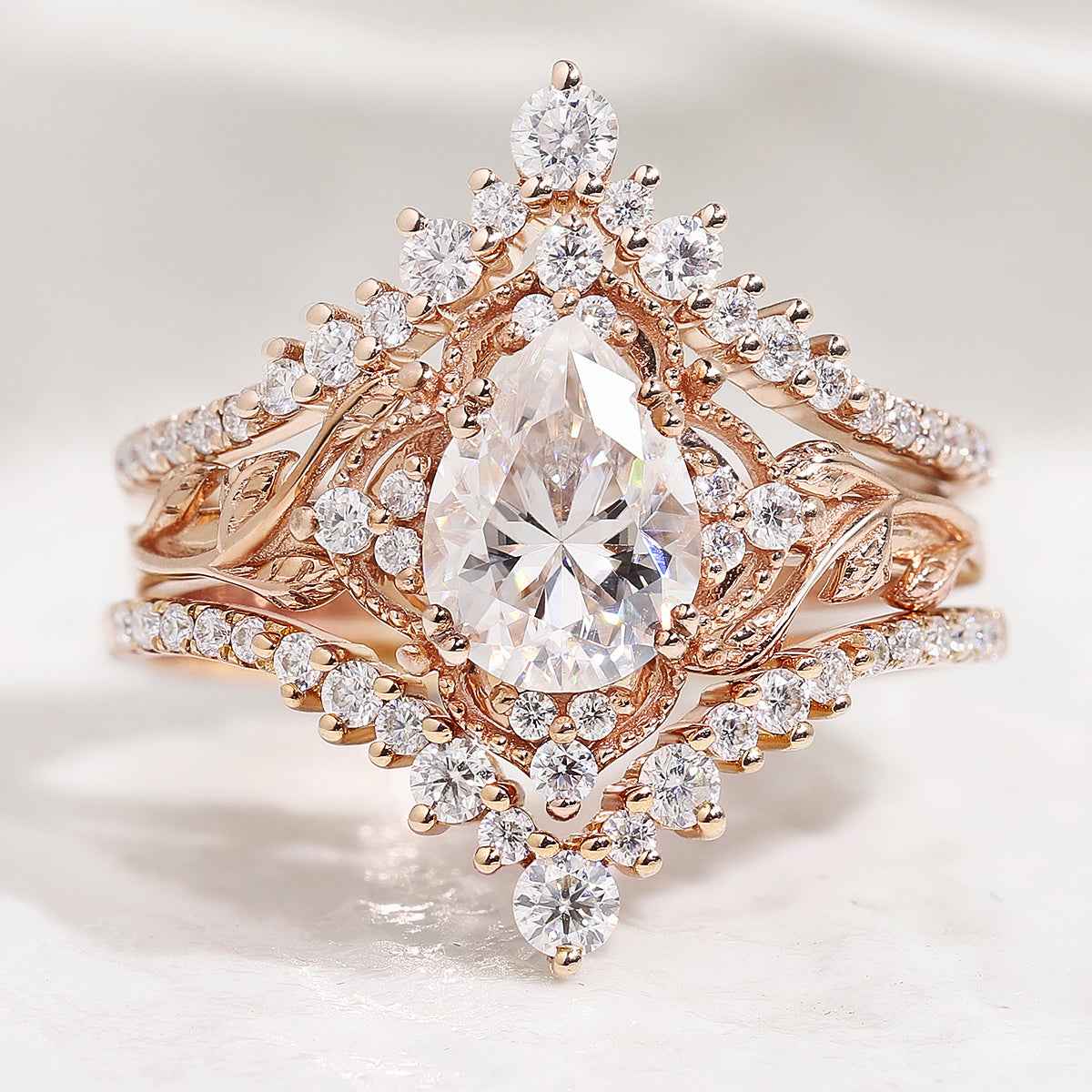| Feature | Oval Cut Diamond | Pear Cut Diamond |
| Shape | Elongated round, stretched circle, symmetrical | Teardrop, one pointed end, one rounded end |
| Appearance | Elegant, sleek, balanced, modern | Unique, dramatic, dainty, romantic |
| Finger Effect | Elongates and slims finger | Elongates and slims finger (point toward nail) |
| Perceived Size | Appears larger than round of same carat weight | Appears larger than round of same carat weight |
| Sparkle | Incredible sparkle (brilliant cut), high fire | High sparkle (brilliant cut) |
| "Bow-Tie" | Can appear, select for minimal effect | Can appear, select for minimal effect |
| Durability | Very durable, no sharp corners, less likely to chip | Delicate pointed tip, needs protective setting |
| Versatility | Highly versatile, suits most settings (solitaire, halo, three-stone) | Versatile, can be worn point up/down or sideways |
| Setting Needs | Less specific, good in many standard settings | Requires V-prong or bezel to protect tip |
| Style Match | Classic, timeless, sophisticated, modern twist | Unique, romantic, bold, distinctive, creative |
| Price | Generally similar to pear, often more affordable than round | Generally similar to oval, often more affordable than round |
Your diamond's shape says a lot about your style. If you're drawn to curves but want something different from a classic round, you may have landed on two top contenders: the graceful oval and the dramatic pear. One is an elegant, stretched circle, while the other is a unique teardrop. Both are brilliant and can make your finger appear longer and more slender. Deciding between them comes down to a few key differences. We'll lay them out to help you find your perfect match.
What Makes Oval Cut Diamonds Special?
An oval cut diamond is basically a stretched-out round brilliant diamond. It has a similar faceting pattern, which means it throws off a lot of sparkle and fire.
Advantages of Choosing an Oval Cut Diamonds
There are several strong reasons why someone might choose an oval cut.
- A Flattering, Larger Look. The elongated shape makes an oval appear bigger than a round diamond of the same carat weight. This cut also creates a lovely slimming effect on the finger.
- Incredible Sparkle. An oval's brilliant faceting is designed for maximum fire. These facets are also great at hiding small natural marks, giving you more sparkle for your budget.
- Versatile Style. Ovals look beautiful in almost any ring setting. They shine in a simple solitaire, a glamorous halo, or a classic three-stone design.
- Durable for Daily Wear. With no sharp corners, ovals are less likely to snag on clothing or chip. This makes them a practical and beautiful option for an everyday ring.
Potential Downsides of an Oval Cut Diamonds
- The Bow-Tie Effect. This dark, bow-tie-shaped shadow may appear throughout the center of the stone where there is less reflection of light. Although normal, you'll want to select a diamond where this effect is not pronounced.
- Proportions Are Everything. An exquisitely proportioned oval can be difficult to find. Some are too long and too narrow, and others are too wide and too short. You might want to look for one with a pleasing balanced, graceful shape.
Who Will Love an Oval Cut?
An oval will please someone who:
- Wants a sleek, sophisticated appearance that makes their finger appear longer.
- Prefers a look that combines traditional beauty with a bit of modern flair.
- Wishes to purchase a diamond that appears larger than it actually is. The oval shape creates an illusion of a larger size.
What Sets Pear Cut Diamonds Apart?
A pear cut diamond has one pointed end and one rounded end, giving it a distinct teardrop shape. This shape is also a brilliant cut, meaning it has many facets that are designed to maximize sparkle. A pear shape diamond ring stands out because of its unusual and eye-catching silhouette.
Reasons to Choose a Pear Cut
- A Unique Shape. The teardrop shape of the pear cut is less typical than other shapes, so it's an excellent option if you're looking for something that really makes a statement.
- Lengthening Effect. Similar to an oval, the pointed shape of a pear can elongate your finger and narrow it, particularly if the tip is positioned toward the nail.
- Versatile Styling. Wear the point up or down for the classic appearance, or wear it sideways (east-west) for that distinctive, modern style.
Things to Watch for with a Pear Cut
- Delicate Tip. The pointed end is the most fragile part of the diamond and may be susceptible to chipping. A protective setting, such as a V-prong or a bezel, is a necessity to protect it.
- The Bow-Tie Shadow. Pears also develop a dark, bow-tie-shaped shadow on their widest part.
Who Will Appreciate a Pear Cut?
A pear shape is perfect for someone looking for a unique, and truly different piece of jewelry. If you like your jewelry to stand out and to speak to your individuality, a pear is a great option. It's for the woman who appreciate a combination of classic elegance with a hint of modern edge.
Oval Cut vs. Pear Cut: A Head-to-Head Comparison
Both oval and pear cut diamonds are known for their elongating effect and brilliant sparkle, but their differences are easy to spot.
- Symmetry: Oval diamonds are symmetrical with rounded ends, giving a balanced, modern look. Pear cuts are asymmetrical, with a rounded base and a pointed tip, creating a teardrop silhouette.
- Visual impact: An oval shaped diamond ring gives a smooth, continuous line that makes fingers look longer and more elegant. Pear shape diamond rings add definition and a slimming effect, especially flattering on shorter or wider fingers.
- Brilliance: Both shapes are brilliant cuts and sparkle beautifully, but ovals may have a slight edge in overall fire due to their facet pattern. Both can show a bow-tie effect, so it's important to view the stone in person or request detailed images.
- Versatility:Oval shaped diamond rings work well in classic, modern, and vintage settings. Pear shapes are popular in both engagement rings and pendants, offering a dramatic, romantic look.
- Settings: Both shapes look great in solitaire, halo, and three-stone settings. Pear cuts need extra protection at the tip, so a bezel or halo is often recommended.
- Price: Both oval and pear cuts are usually more affordable than round diamonds and appear larger for their carat weight.
Matching Diamond Shape to Your Style and Lifestyle
The decision between an oval cut and pear cut diamond is a matter of personal style, your daily activities, and what you wish your ring to convey about you.
Classic and Timeless
If clean lines and understated elegance are your thing, an oval diamond ring or an oval lab created diamond is a great option. It's a classic with a modern twist, perfect for someone who requires a ring that will never go out of style.
Unique and Romantic
If you enjoy vintage appeal or desire something extremely unique, a pear shape diamond ring is difficult to surpass. Its teardrop form is dramatic and dainty, ideal for romantics and creative individuals.
Active Lifestyle
They are both durable, but oval diamonds do not have nearly as pointed edges as pear cuts, so they are less likely to chip. The pear cut's pointed tip requires special care and guarding setting, particularly if you use your hands a lot.
If you can, go to a jeweler and try on both shapes. See how each one rests on your hand, how it feels, and how the sparkle captures your eye. Pictures and videos are helpful, but there is nothing like seeing the actual thing.
Finding Your Perfect Diamond Shape
So, which will it be: the timeless elegance of the oval or the bold teardrop of the pear? There's no wrong answer here. Your final choice is purely about what you love to look at on your own hand. Both shapes are brilliant, flattering, and make for a stunning ring. The best way to decide is to see them in person. Take your time, try on different styles, and enjoy finding the diamond shape that suits your style best.
FAQs About Oval vs. Pear Diamonds
Q1: Which diamond shape will appear larger: pear or oval?
Oval and pear shape diamonds both appear larger than the equivalent weight round diamonds due to their elongated shapes. The difference between them is subtle, but both offer impressive finger coverage for your budget.
Q2: Is an Oval or Pear Cut More Expensive?
In general, the price per carat for pear and oval diamonds can be similar. Price, however, always ultimately comes down to the 4 C's: weight, color, clarity, and cut grade. In some instances, pear shapes may be slightly lower in price than ovals of similar quality since their demand can vary more. The only way to know for sure is to head-to-head compare specific diamonds side-by-side.
Q3: How do I clean and care for each diamond shape?
Clean oval and pear-shaped diamond rings with warm water, gentle soap, and a soft-bristled brush. For pear shapes, check the setting regularly to guard the pointed tip. For ovals, inspect prongs for security, particularly at the ends. Following good jewelry care practices will help keep all your pieces looking their best.
Q4: How Do I Prevent the Bow-Tie Effect in These Cuts?
The "bow-tie" effect is a typical problem in both oval and pear shape diamonds. It's a dark area across the center of the diamond where light isn't being reflected well. The best way to prevent an obvious bow-tie is to see the diamond in person or by high-quality 360-degree videos from various angles. A well-cut diamond will minimize this effect. It's also wise to talk to a trusted jeweler who will describe the light performance of a particular stone.




